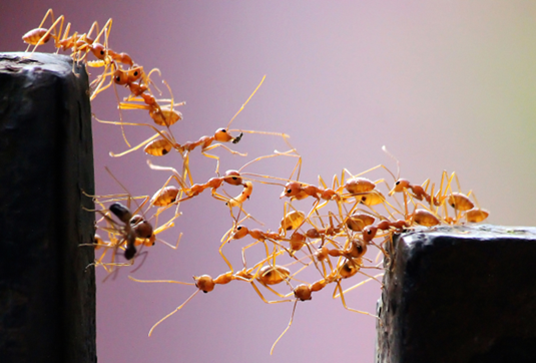File size: 6,694 Bytes
78c9e49 76d9c3c 78c9e49 ea84862 4e517c9 78c9e49 76d9c3c 4e517c9 78c9e49 7333553 78c9e49 7333553 78c9e49 7333553 78c9e49 41edb19 78c9e49 16f8316 78c9e49 16f8316 78c9e49 16f8316 78c9e49 16f8316 78c9e49 5085d46 78c9e49 5085d46 78c9e49 5085d46 dda0fae 5085d46 78c9e49 7333553 4fe6f34 55ba8cc c5452da e59f67c c5452da 4011499 074a971 5085d46 e59f67c 7333553 ea84862 41edb19 f99f704 e881400 ea84862 |
1 2 3 4 5 6 7 8 9 10 11 12 13 14 15 16 17 18 19 20 21 22 23 24 25 26 27 28 29 30 31 32 33 34 35 36 37 38 39 40 41 42 43 44 45 46 47 48 49 50 51 52 53 54 55 56 57 58 59 60 61 62 63 64 65 66 67 68 69 70 71 72 73 74 75 76 77 78 79 80 81 82 83 84 85 86 87 88 89 90 91 92 93 94 95 96 97 98 99 100 101 102 103 104 105 106 107 108 109 110 111 112 113 114 115 116 117 118 119 120 121 122 123 124 125 126 127 128 129 130 131 132 133 |
---
language:
- multilingual
license: apache-2.0
tags:
- nlp
- code
- vision
- chemistry
- engineering
- biology
- bio-inspired
- text-generation-inference
- materials science
pipeline_tag: image-text-to-text
inference:
parameters:
temperature: 0.3
widget:
- messages:
- role: user
content: <|image_1|>Can you describe what you see in the image?
library_name: transformers
---
## Model Summary
Cephalo is a series of multimodal materials science focused vision large language models (V-LLMs) designed to integrate visual and linguistic data for advanced understanding and interaction in human-AI or multi-agent AI frameworks.
A novel aspect of Cephalo's development is the innovative dataset generation method. The extraction process employs advanced algorithms to accurately detect and separate images and their corresponding textual descriptions from complex PDF documents. It involves extracting images and captions from PDFs to create well-reasoned image-text pairs, utilizing large language models (LLMs) for natural language processing. These image-text pairs are then refined and validated through LLM-based NLP processing, ensuring high-quality and contextually relevant data for training.
Cephalo can interpret complex visual scenes and generating contextually accurate language descriptions and answer queries.
The model is developed to process diverse inputs, including images and text, facilitating a broad range of applications such as image captioning, visual question answering, and multimodal content generation. The architecture combines a vision encoder model and an autoregressive transformer to process complex natural language understanding.

Cephalo provides a robust framework for multimodal interaction and understanding, including the development of complex generative pipelines to create 2D and 3D renderings of material microstructures as input for additive manufacturing methods.
This version of Cephalo, lamm-mit/Cephalo-Phi-3-vision-128k-4b-alpha, is based on the Phi-3-Vision-128K-Instruct model. The model has a context length of 128,000 tokens. Further details, see: https://huggingface.co/microsoft/Phi-3-vision-128k-instruct.
### Chat Format
Given the nature of the training data, the Cephalo-Phi-3-vision-128k-4b-alpha model is best suited for a single image input wih prompts using the chat format as follows.
You can provide the prompt as a single image with a generic template as follow:
```markdown
<|user|>\n<|image_1|>\n{prompt}<|end|>\n<|assistant|>\n
```
The model generates the text after `<|assistant|>` . For multi-turn conversations, the prompt should be formatted as follows:
```markdown
<|user|>\n<|image_1|>\n{prompt_1}<|end|>\n<|assistant|>\n{response_1}<|end|>\n<|user|>\n{prompt_2}<|end|>\n<|assistant|>\n
```
### Sample inference code
This code snippets show how to get quickly started on a GPU:
```python
from PIL import Image
import requests
from transformers import AutoModelForCausalLM
from transformers import AutoProcessor
model_id = "lamm-mit/Cephalo-Phi-3-vision-128k-4b-alpha"
model = AutoModelForCausalLM.from_pretrained(model_id, device_map="cuda", trust_remote_code=True, torch_dtype="auto")
processor = AutoProcessor.from_pretrained(model_id, trust_remote_code=True)
messages = [
{"role": "user", "content": "<|image_1|>\nWhat is shown in this image, and what is the relevance for materials design?"},
]
url = "https://d2r55xnwy6nx47.cloudfront.net/uploads/2018/02/Ants_Lede1300.jpg"
image = Image.open(requests.get(url, stream=True).raw)
prompt = processor.tokenizer.apply_chat_template(messages, tokenize=False, add_generation_prompt=True)
inputs = processor(prompt, [image], return_tensors="pt").to("cuda:0")
generation_args = {
"max_new_tokens": 512,
"temperature": 0.1,
"do_sample": True,
"stop_strings": ['<|end|>',
'<|endoftext|>'],
"tokenizer": processor.tokenizer,
}
generate_ids = model.generate(**inputs, eos_token_id=processor.tokenizer.eos_token_id, **generation_args)
# remove input tokens
generate_ids = generate_ids[:, inputs['input_ids'].shape[1]:]
response = processor.batch_decode(generate_ids, skip_special_tokens=True, clean_up_tokenization_spaces=False)[0]
print(response)
```
Sample output:

<small>Image by [Vaishakh Manohar](https://www.quantamagazine.org/the-simple-algorithm-that-ants-use-to-build-bridges-20180226/)</small>
<pre style="white-space: pre-wrap;">
The image shows a group of red imported fire ants (Solenopsis invicta) forming a bridge between two wooden posts. The relevance for materials design lies in the ants' ability to construct a bridge using their body parts, which demonstrates the potential for biomimetic design. Biomimetic design involves emulating natural processes and structures to create new materials and technologies. The ants' bridge construction could inspire the development of novel materials with enhanced structural properties, such as lightweight yet strong materials for construction and engineering applications.
</pre>
## Dataset generation
The schematic below shows a visualization of the approach to generate datasets for training the vision model. The extraction process employs advanced algorithms to accurately detect and separate images and their corresponding textual descriptions from complex PDF documents. It involves extracting images and captions from PDFs to create well-reasoned image-text pairs, utilizing large language models (LLMs) for natural language processing. These image-text pairs are then refined and validated through LLM-based NLP processing, ensuring high-quality and contextually relevant data for training.
The image below shows reproductions of two representative pages of the scientific article (here, Spivak, Buehler, et al., 2011), and how they are used to extract visual scientific data for training the Cephalo model.

## Citation
Please cite as:
```
@article{Buehler_Cephalo_2024,
title = {Cephalo, a series of multi-modal vision-language models for bio-inspired materials and mechanics},
author = {M.J. Buehler},
journal = {},
year = {2024},
volume = {},
pages = {},
url = {}
}
``` |